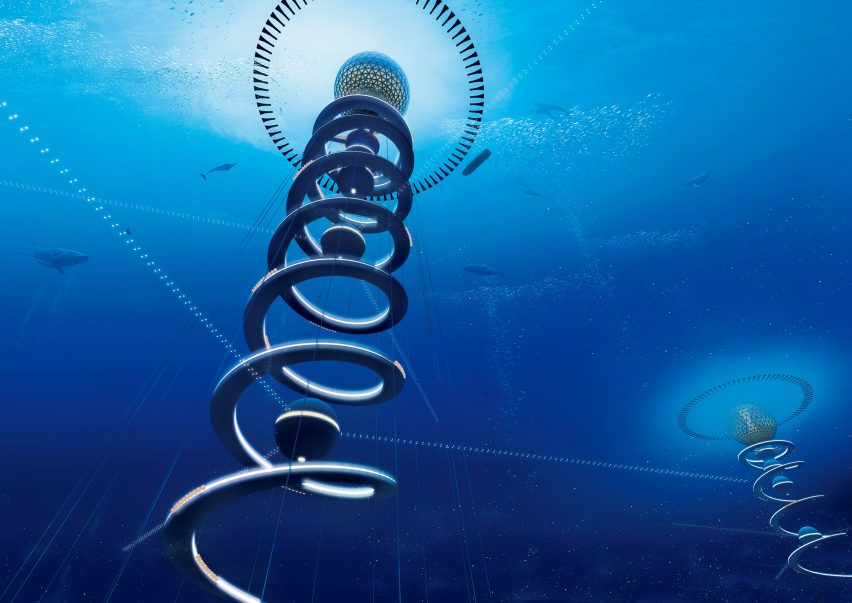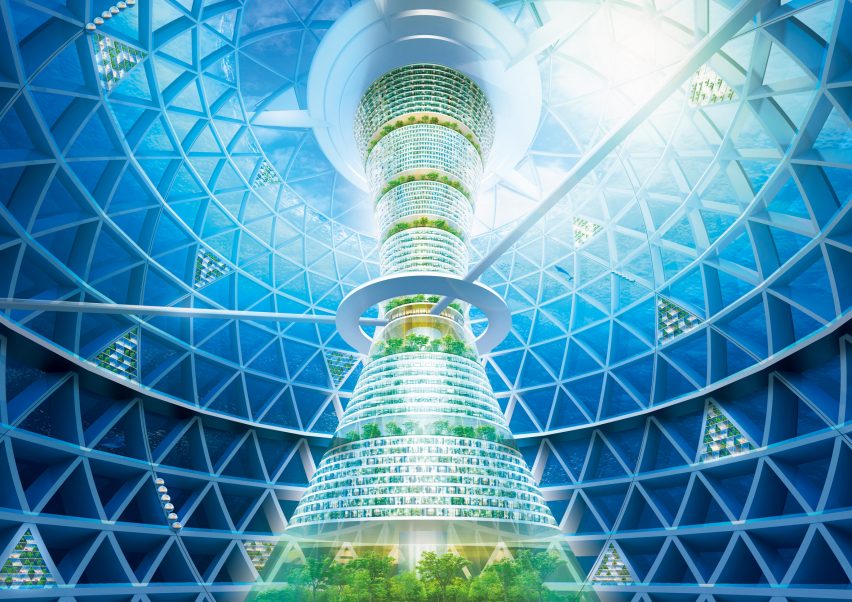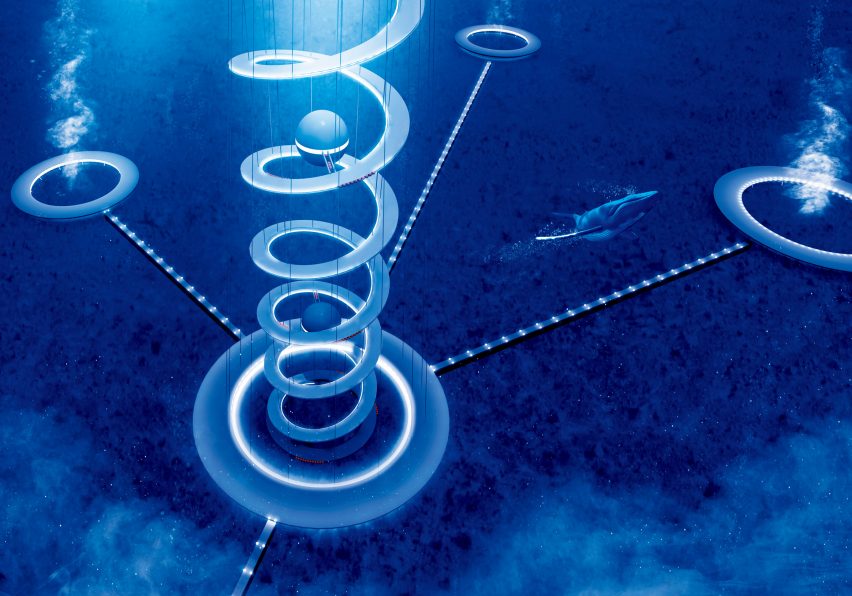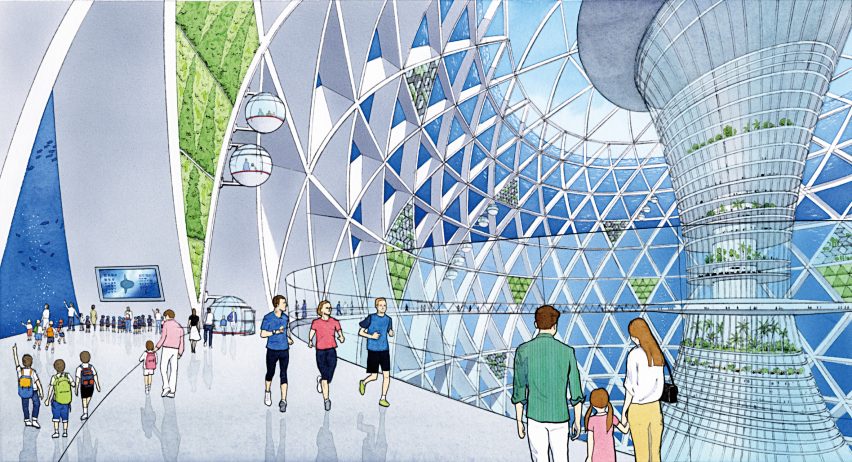Ocean Spiral is a conceptual city proposed beneath the surface of the ocean
Our latest Dezeen x MINI Living video explores a proposal for an environmentally friendly underwater city, which Japanese engineering firm Shimizu Corporation claims could be a reality by 2030.

Called Ocean Spiral, the design envisions a habitable settlement at surface level, which harnesses the resources of the ocean to allow it be entirely self-sufficient.
The conceptual metropolis consists of two main elements. The first is a 500-metre-diameter spherical city, within which a tower accommodates homes and workspaces for up to 5,000 people.
The second element is a spiral structure that connects this sphere with a base station on the ocean floor, 2.5 miles down. This element is designed to provide the city with essential resources such as energy, fresh water and food.

The spiral would generate renewable energy using ocean thermal energy conversion (OTEC), a process that takes advantage of the temperature difference between cooler deep seawater and warmer shallow seawater to drive a generator to produce electricity.
Drinking water would be produced by a process called reverse osmosis membrane desalination, which utilises the high pressures naturally found at lower depths in the ocean to purify seawater.

Food for the inhabitants of Ocean Spiral would be provided by large underwater farms, where fish, crustaceans and aquatic plants could be cultivated.
Additionally, the base station at the end of the spiral would be used to excavate and cultivate natural resources from the seabed – a resource that is largely untapped at present.
Shimizu Corporation believes it may be possible in the future to convert carbon dioxide into methane using micro-organisms that live on the seabed. This could provide additional energy for the city.

Shimizu Corporation first unveiled the concept for Ocean Spiral in 2014, together with Tokyo University and the Japan Agency for Marine-Earth Science and Technology, and has spent the last three years developing the idea.
The speculative project is predicted to take five years to build and cost approximately ¥3 trillion (approximately £20 billion). The company claims it could be ready for human habitation by 2030.
This movie is part of Dezeen x MINI Living Initiative, a year-long collaboration with MINI exploring how architecture and design can contribute to a brighter urban future through a series of videos and talks.
